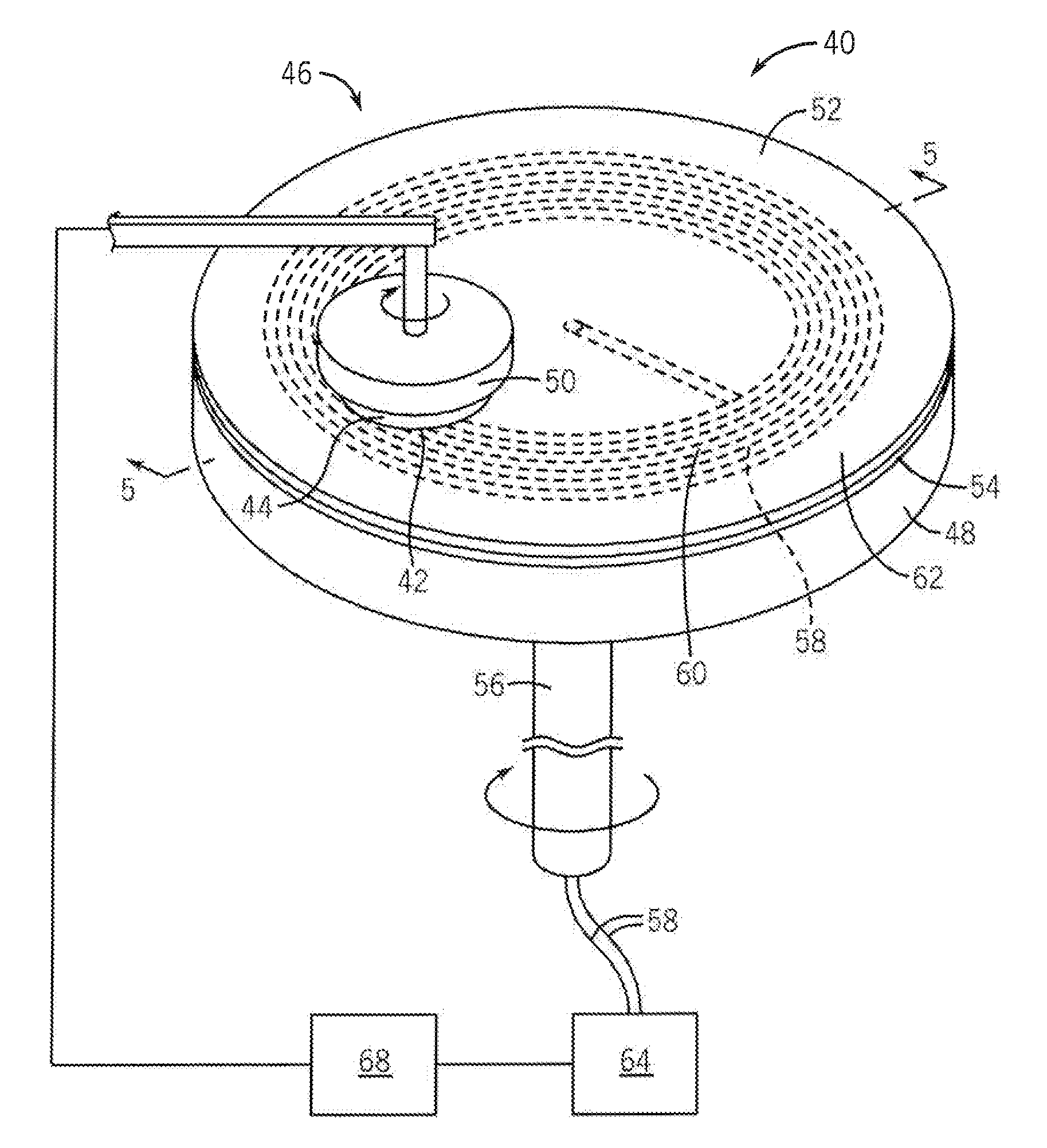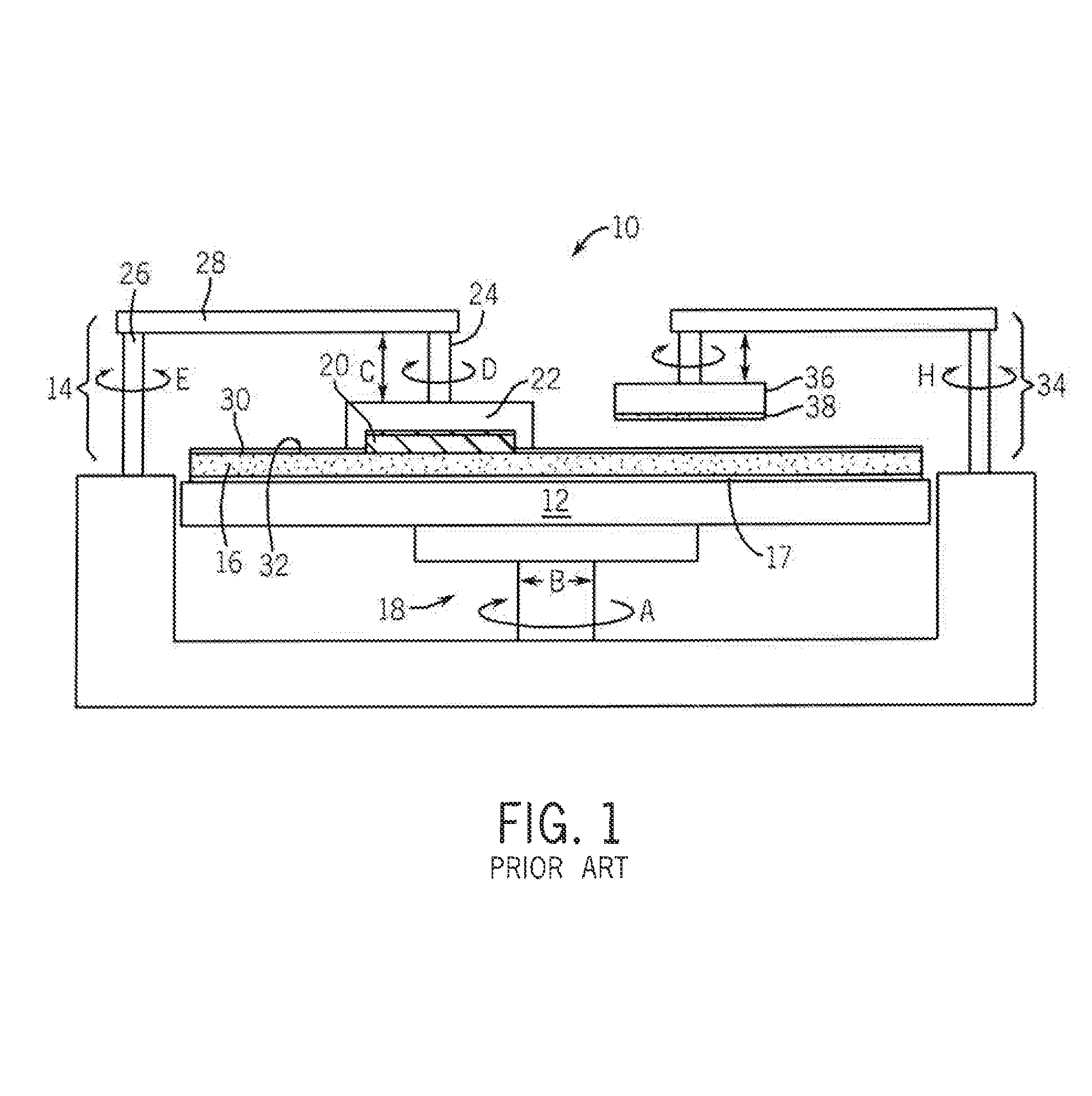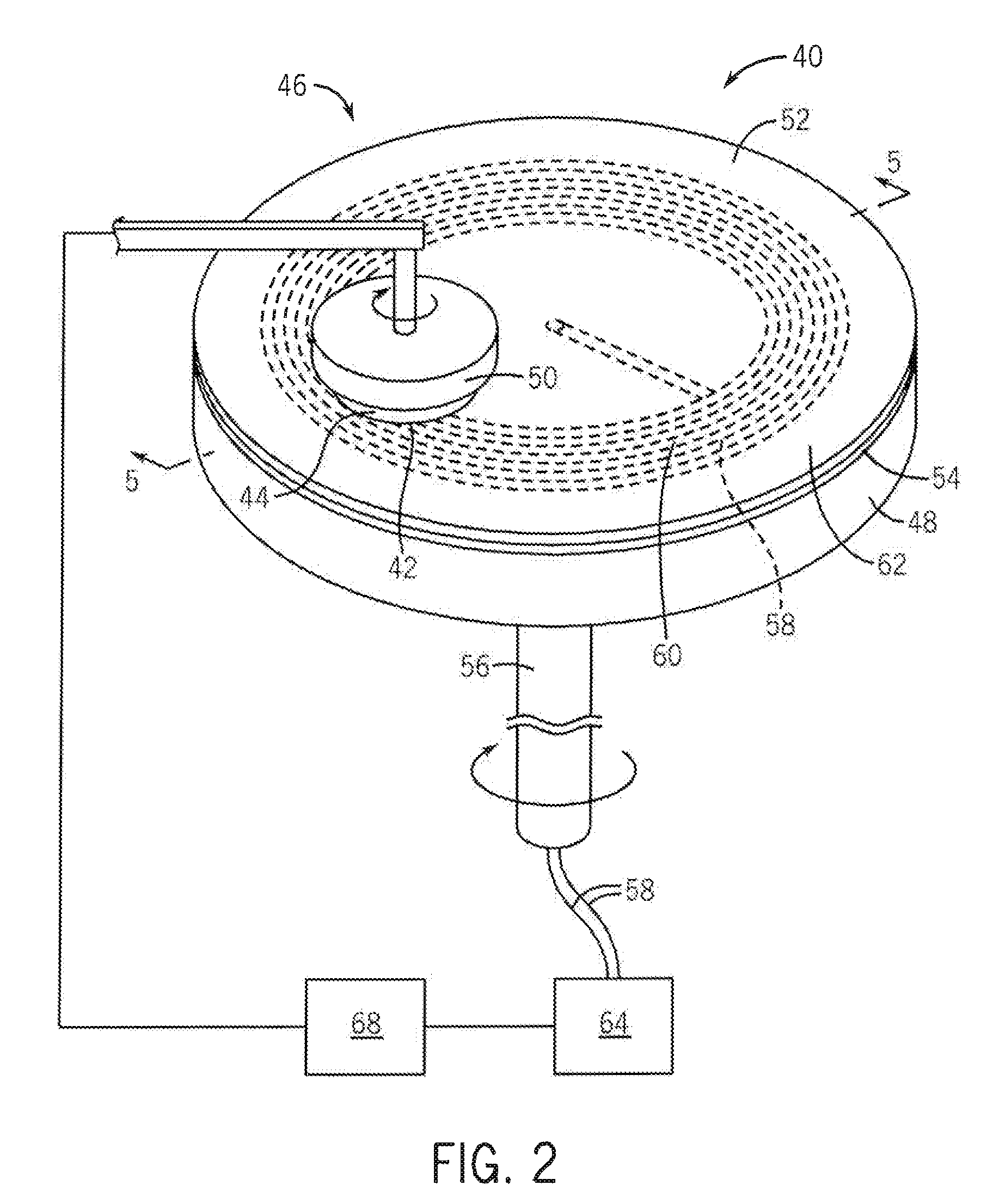Embedded fiber acoustic sensor for CMP process endpoint
a technology of acoustic sensor and fiber acoustic sensor, which is applied in the direction of grinding machine components, manufacturing tools, lapping machines, etc., can solve the problems of reducing the processing throughput of cmp, affecting the accuracy of photolithographic processes used to form sub-micron features, and reducing the sensitivity of the sensor, so as to achieve high spatial mapping of the acoustic energy or vibration spectrum of the substrate, easy incorporation, and increased sensitivity
- Summary
- Abstract
- Description
- Claims
- Application Information
AI Technical Summary
Benefits of technology
Problems solved by technology
Method used
Image
Examples
Embodiment Construction
[0032]The following description with reference to the drawings provides illustrative examples of devices, assemblies, systems, and methods for monitoring and / or endpointing planarizing and conditioning processes in mechanical or chemical-mechanical planarization of semiconductor wafers and other microelectronic substrates according to the invention. Such description is for illustrative purposes only and not for purposes of limiting the same. The present invention can be utilized to provide other embodiments of devices, assemblies, and systems in accordance with the invention.
[0033]In the context of the current application, the term “semiconductor substrate” or “semiconductive substrate” or “semiconductive wafer fragment” or “wafer fragment” or “wafer” will be understood to mean any construction comprising semiconductor material, including but not limited to bulk semiconductive materials such as a semiconductor wafer (either alone or in assemblies comprising other materials thereon),...
PUM
| Property | Measurement | Unit |
|---|---|---|
| width | aaaaa | aaaaa |
| wavelength | aaaaa | aaaaa |
| vibrational energy | aaaaa | aaaaa |
Abstract
Description
Claims
Application Information
 Login to View More
Login to View More - R&D
- Intellectual Property
- Life Sciences
- Materials
- Tech Scout
- Unparalleled Data Quality
- Higher Quality Content
- 60% Fewer Hallucinations
Browse by: Latest US Patents, China's latest patents, Technical Efficacy Thesaurus, Application Domain, Technology Topic, Popular Technical Reports.
© 2025 PatSnap. All rights reserved.Legal|Privacy policy|Modern Slavery Act Transparency Statement|Sitemap|About US| Contact US: help@patsnap.com



